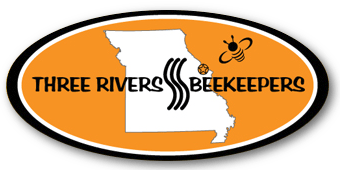The color of honey varies from almost clear to dark brown, with a wide range of flavors. In general, lighter colored honeys are milder in flavor.
Alfalfa – Mild flavor and aroma similar to beeswax. Nearly flavorless to milky in color. Alfalfa’s violet purple flowers bloom through the summer as it is usually harvested several times a year for hay. Its honey is white or extra light amber in color with a mild flavor and aroma similar to beeswax.
Aster – Strong flavor, in the hive it is generally mixed with honey from goldenrod. Its honey is light in color and granulates rapidly.
Basswood – Distinct almost minty, quite delicate and has a fresh, woodsy aroma, warm herbal notes and clean finish. Its honey is water-white or pale. The basswood tree grows quite well in northern states through the US and is renowned for it shade and fragrant, cream colored flowers.
Black Locust – Mild, pleasant tasting honey, with aromatic, slightly tangy floral. Very light, almost clear in color, ranging from water white to light yellow. This honey comes from the black locust tree which flowers in long, white racemes. The opportunity for this honey is a short window in early to mid-May. The trees are only flowering a couple of weeks at best and we typically have a big spring storm when then knocks off prior to the bees being able to make a lot of locust honey. The honey does not crystallize.
Buckwheat – Strong, distinct, pungent flavor with molasses and malty tones and a lingering aftertaste. It can be compared to molasses in both color and viscosity. Buckwheat has excellent application for BBQ sauces and baked goods. As a general rule, darker honeys tend to be higher in antioxidant compounds than lighter ones. Because of the characteristics, darker honeys also tend to be higher in mineral content on average, as compared to lighter honeys. The buckwheat plant is an excellent honey source, sometimes planted by beekeepers specifically for honey production. The blossoms are rich in nectar and blooming can continue into fall.
Clover – Clover honey varies in color from water-white to extra light amber and has a mild, delicate flavor with a hint of cinnamon. There are a few different varieties of clover – white dutch clover, sweet clover, and red clover. Clovers contribute more to honey production in the US than any other group of plants.
Goldenrod – Strong, robust flavor of wildflower and beeswax. The color ranges from golden to almost as dark as maple syrup. When ripening goldenrod nectar produces a strong, objectionable and sour odor. Honey granulates rapidly. Goldenrod honey is described with a variety of color and tastes. This honey granulates quickly.
Milkweed – Light in color with a mild flavor. All species are great for honey bees. Nectar is so abundant that it is possible to shake a blossom and see nectar fall.
Sunflowers – Sunflower honey is light to extra light amber in color and with a lightly herbaceous taste with citrus notes. High in pollen and tends to granulate. All species are great for honey bees. Growing up to 9 feet tall, the sunflower is cultivated in vast fields that are a paradise for bees as its blossoms produce far more nectar than smaller flowering plants.
Tulip Tree – Mild in flavor it is one of the few spring flowers to produce a dark reddish tinged honey.
